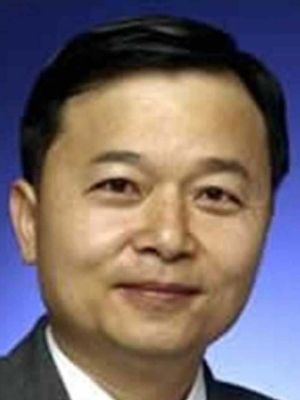To combat infestations, UTA to use tiny sensors to track bugs

The University of Texas at Arlington is helping develop tiny sensors that attach to insects, tracking their movements and life cycles in an effort to combat infestations and increase farm production.
The project is led by computer science Professor Gautam Das and electrical engineering Professor Wei-Jen Lee, working with the U.S. Department of Agriculture (USDA) Agricultural Research Services. The $122,057, USDA grant runs through June 2023.
“This is a unique approach to the problem of infestations, and we hope to produce results that will allow us to expand our research later,” Das said. “The use of artificial intelligence in agriculture is a growing field, and this is just one small example of how it can make an impact.”
Das will work to develop a sensor that can be attached to the tarnished plant bug, a plant-feeding insect known to ruin crops of small fruits and vegetables. The sensors would relay information to a base station that tracks the insect’s coordinates and movements. Das and Jianzhong Su, professor and chair of mathematics, will perform data analysis to find patterns.
Lee will work on a radio-frequency identification (RFID) tag for the insects and use multiple readers to pinpoint their locations. A wireless sensor network will transmit data for analysis.

The researchers must also develop a way to provide power to the sensor, possibly by tapping into the insect’s movements. The team is working with University of Central Florida mechanical engineering Assistant Professor Wendy Shen.
“Insects can positively or negatively affect agricultural quality and production,” Lee said. “Understanding their behavior is an important step to taking advantage of their benefits and mitigating potential damages. Applying advanced sensor technologies and artificial intelligence will have a profound impact on the future development of agriculture.”

The insects will be released into special rooms maintained by the USDA that have large spaces where plants are grown and insects can fly around in a controlled environment. This way, the team can test its technology without worrying about negative impacts on actual crops.
Since 2020, the USDA and the National Science Foundation have poured millions of dollars into artificial intelligence research in agriculture. Su has led a university-wide research collaboration with the USDA since 2018 with researchers from the Colleges of Science and Engineering, through funding from an earlier USDA Hispanic Serving Institution grant focused on agriculture data and Internet of Things.
“We have built a good relationship with the USDA, and we are happy that they have provided funding for this project,” Das said. “Hopefully, this is the beginning of a series of opportunities.”
- Written by Jeremy Agor, College of Engineering